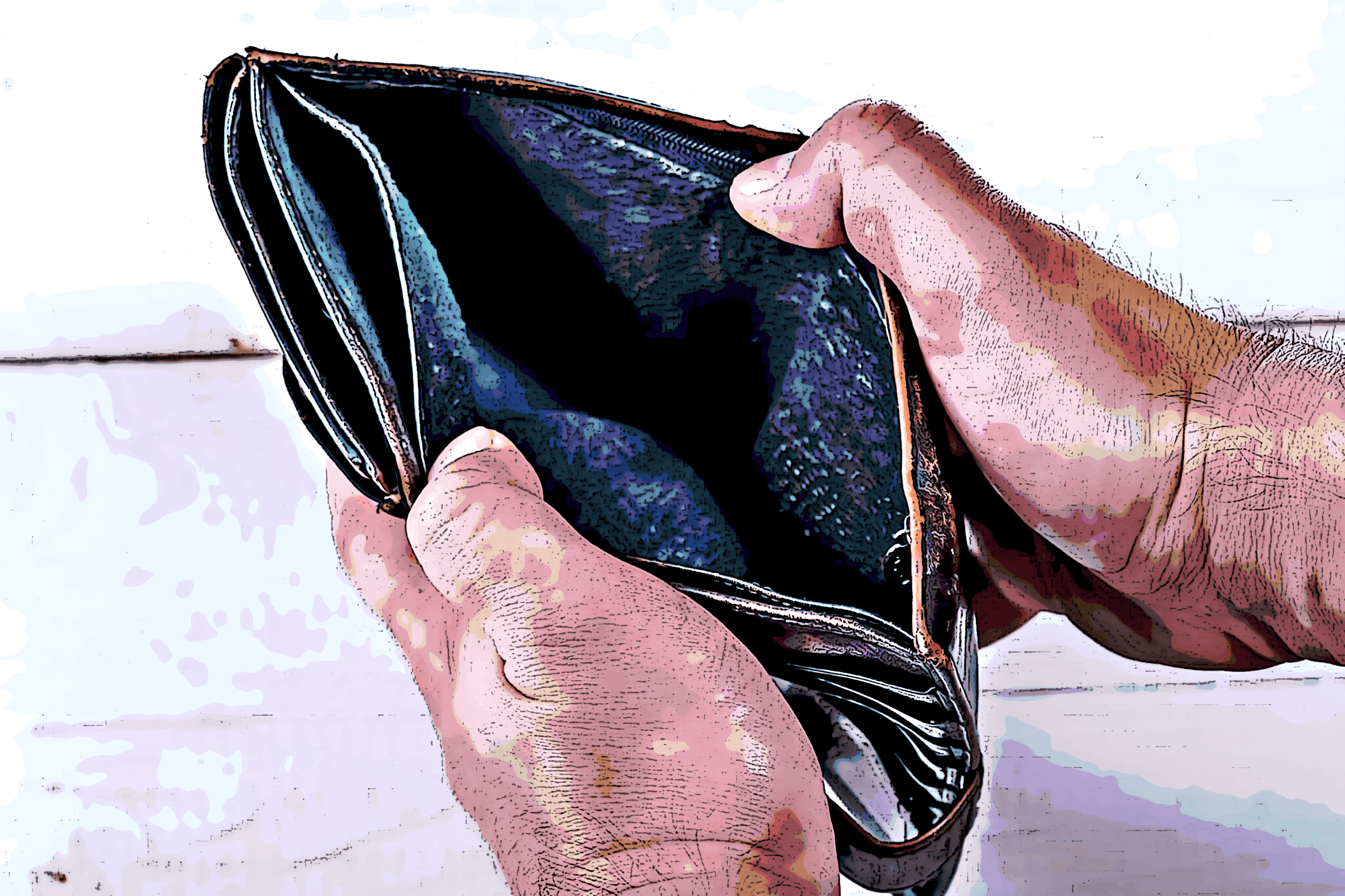Amidst the panic and rising death tolls of a global pandemic causing stock markets to crash, all signs point towards a global recession. In recent times of global economic turmoil, bitcoin (aka “digital gold”) was seen as a safe haven for investors. However, it is apparent that even bitcoin is not immune, as it and other altcoin prices suffer heavy losses. Even gold, traditionally the safest bet during uncertain times, seems to have fallen from grace. At a time when we need a reliable store of value and hedge against unprecedented chaos, where do we turn?
Stock markets plunge, and it will get worse before it gets better

As billionaire venture capitalist Tim Draper tweeted, “more people will die from a crashing economy than from this virus.”
Efforts to flatten the line, such as mandates to close businesses and schools, city lockdowns, closed borders, and flight cancellations have shaken the world as we know it and left the financial markets reeling. Since the end of February 2020, when coronavirus fears began driving stocks down, it seems as if each day’s headlines read that the stock markets haven’t plummeted this hard since the last global recession of 2008.
On March 9th, the U.K. and U.S. stock markets suffered their worst day since 2008. Just three days later, due to coronavirus fears, the FTSE 100, Dow and S&P 500 saw their worst one day drops since 1987. U.S. President Donald Trump acknowledged that the economy may be headed towards a recession. Financial experts at Bloomberg forecast that the coronavirus could cost the global economy $2.7 trillion.
Although recent moves by the U.S. Federal Reserve to slash rates to nearly zero and plans to infuse the economy with $2 trillion in economic stimulus have invoked a positive response, with the markets temporarily rallying by more than 15% last week before settling back by 3% this week, we have not seen the worst yet. Macroeconomic indicators show that we are rapidly heading toward the depths of what we saw in the financial crisis of 2008. Analysts at Goldman Sachs predict that businesses in the S&P 500 will see a decline without any profit growth in 2020 as a result of the coronavirus crisis with unemployment rates skyrocketing worldwide.
With massive economic and social dislocations occurring on a global scale and exponentially worsening in many densely populated locations by the day, we must stock up not only on non-perishable foods and supplies, but ensure that our funds and life savings will also not perish during this major economic crunch.
See related article: BOE Governor Says Global Digital Currency Should Replace the US Dollar – Rabobank’s Michael Every Breaks It Down

Good old gold and other commodities run for cover
The global commodity market has witnessed intense selling pressures reaching historic records. Covid-19 has rampaged every aspect of society and the global economy, including gold, a historically tried and true safe haven. Many are surprised by gold’s decline as it has typically seen price increases during times of financial market stress. However, the gold market’s response to global interest rate cuts and investors’ beeline for liquidity demonstrates that it fails the safe-haven strength test.
Following the decline of the stock markets, gold prices are also down more than 13% (at the time of this writing March 17, 2020) from a seven-year high reached earlier this month, and the lowest since 1983. Other commodities are also following suit going down the spiral with silver losing more than 5%, platinum dropping by 4%, and palladium down by 2.2%.
Bitcoin — an alternative safe haven or a turbulent rollercoaster?
The largest cryptocurrency by market cap, bitcoin came into the world on Jan. 3, 2009. A solution to the last global economic crisis, the world was anonymously gifted with a decentralized currency that held the promise of empowering people with financial security during worst-case scenarios when financial systems and rule of law break down. However, many believe bitcoin is failing to keep its promise as a hedge against economic catastrophe during our most dire of times.
Bitcoiners relied on the cryptocurrency to counter the flaws of a traditional fiat economy, and now are intensely scrutinizing bitcoin’s narrative as it dropped by roughly 50% in a single day, dipping below $4,000 and shedding more than $60 billion from its market capitalization. Following a similar rebound as the stock markets, subsequent to the Fed’s announcement, bitcoin saw a 2% rise. However, many crypto experts, such as veteran trader Peter Brandt, believe it is very likely that we haven’t seen the worst yet and it may very well fall under $1,000.
Crypto thought leader Andreas Antonopoulous predicted that bitcoin would crash because investment from venture capital, corporations, and individuals comes from disposable income, similar to gold. Stocking up on food and supplies, paying for family leave and medical necessities is most certainly diverting resources from a store of value which offers high-risk price swings and sub-zero stability.
With a recession looming, where do we turn?
Stablecoins offer the benefits of a cryptocurrency, such as low fees, fast transactions, security, immutability and transparency, while also maintaining price stability. Stablecoins such as USDC and controversial coin Tether, which are both backed by the U.S. dollar, saw a spike in demand and market capitalization gains as investors looked to hedge their crypto and rushed for liquidity.

Stablecoins are leading us in the right direction; however, these types of fiat-pegged, centralized stablecoins are at risk of the same market fluctuations, currency manipulations and inflation as their traditional fiat counterparts. The U.S. dollar itself has been depreciating in value since 1913, losing 96% of its value in the 100 year time period from 1913 to 2013. The purchasing power of $100 in 1913 equates to $2,625 in 2019, just to put it into perspective.
By definition, a safe haven is expected to retain or increase in value during times of economic volatility, not depreciate. So, with equities, gold, bitcoin, and fiat-pegged stablecoins unable to step up to the plate, a different solution is necessary. One that can serve as a safe haven in times of a market uproar when others fail, that will preserve purchasing power and steadily appreciate in value over time outpacing inflation. A currency model that can unlock the true potential of stablecoins with an infrastructure that leverages a non-flationary value as a stabilizing mechanism, combined with an elastic two-token model to regulate price, offers a light at the end of the tunnel.
There is a clear need for next-generation algorithmic stablecoins to integrate with the economic system and pave the way forward towards a more stable digital financial future, as opposed to merely digitizing fiat currencies and our current flawed system. Definitive strategies need to be developed and executed that can be applied and tangibly benefit governments, companies, investors, and portfolio funds.
As archaic safe havens crumble under our modern-day pressures, a new refuge arises that provides and maintains price stability even during this pandemic, which offers a hedge against risk, and most importantly that will preserve your value over the course of the next recession and generations onward.




